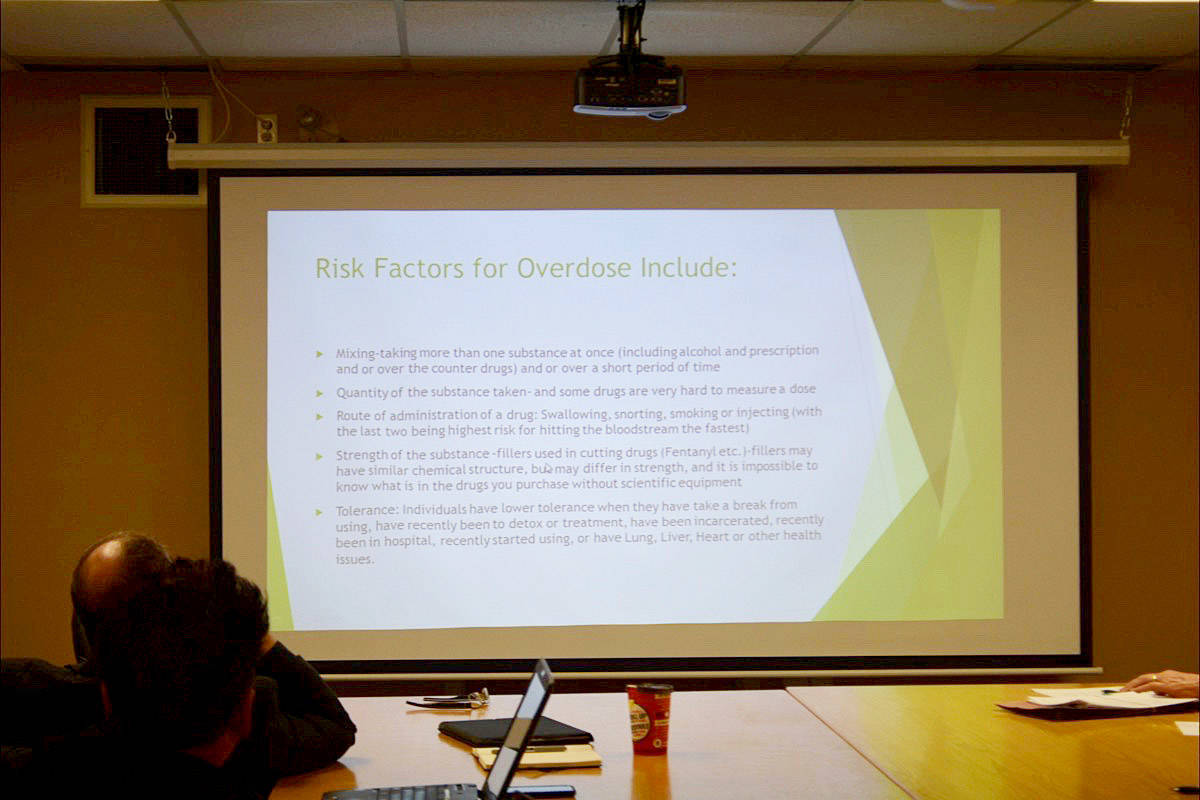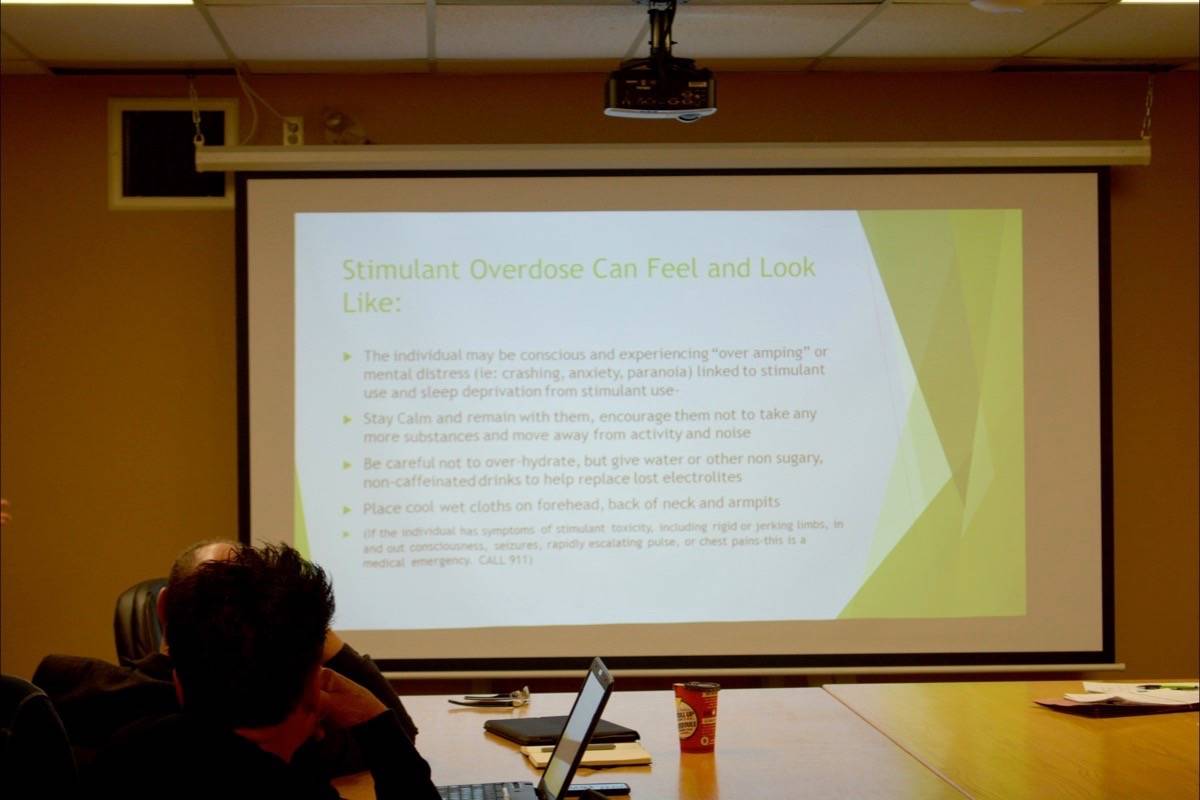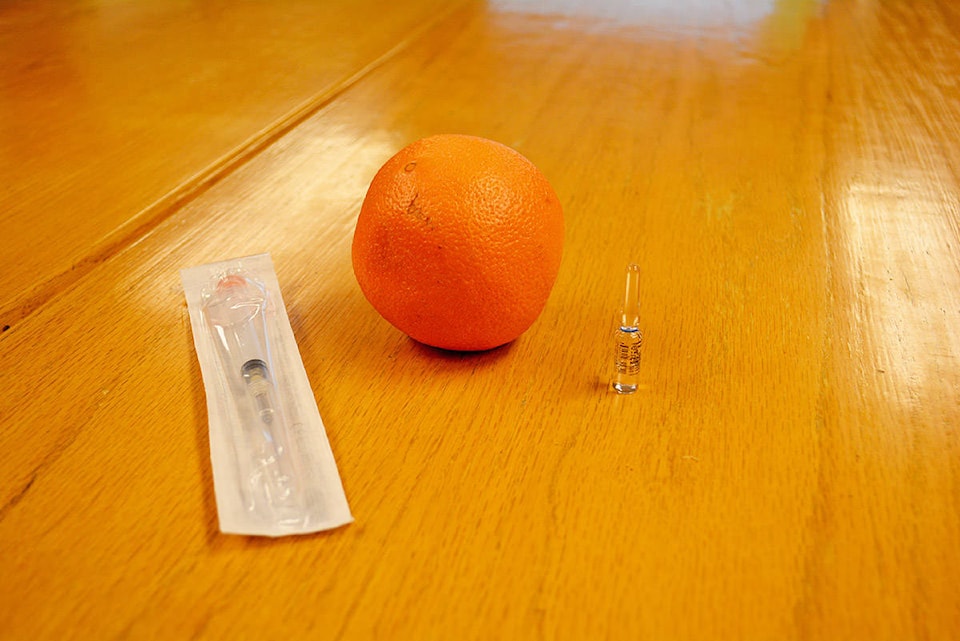With a giant orange in one hand and an injection needle in the other, Williams Lake city councillors practiced administering naloxone Tuesday evening.
After hearing an opioid crisis presentation from Jordan Davis, Harm Reduction Co-ordinator with the Boys and Girls Club of Williams Lake, and RCMP Staff Sgt. Del Byron in January, council invited them to return to a committee of the whole meeting to show them first hand how to administer the opioid overdose reversal drug.
Read more: Williams Lake city councillors commit to overdose response training
Davis described what to do when it appears someone has overdosed.
“The first thing you are going to do is try to talk to them and if they don’t respond then we do what is called a sternum rub and press into the breast bone very firmly and call their name,” Davis explained. “If they have passed out from drinking, they might not fully respond, but they will give you some sort of response. If they don’t respond then you are going to assume they have overdosed.”
It is important to call 9-1-1 immediately because paramedics will need to attend, she advised.
Davis then demonstrated how to inject the drug.
“This is an intramuscular injection, which means it goes into a large muscle,” she said as she held up a needle, noting it’s always better to go into the thigh.
The needles, she explained, are called vanishing point syringes because they retract.
“They don’t need a sharp container to dispose of them so they are very safe.”
After the injection, it is important to continue to give the patient rescue breaths.
“You wait three to five minutes and if they still are not awake, you will go through the same process again,” she explained. “In each naloxone kit there are three syringes and three [cartridges] of naloxone.”
When asked by Coun. Jason Ryll if a person can receive too much naloxone, Davis responded, “no.”
“The worst thing that can happen is that it can make you feel a little bit nauseous,” she said. “Naloxone goes into the brain, takes the opioid off the brain and gives you 30 to 90 minutes to get them on an IV. They have to be on continuous naloxone until all their symptoms are gone. They have to go to the hospital.”
Read More: Chronic pain patients need options beyond opioids
news@wltribune.com
Like us on Facebook and follow us on Twitter



